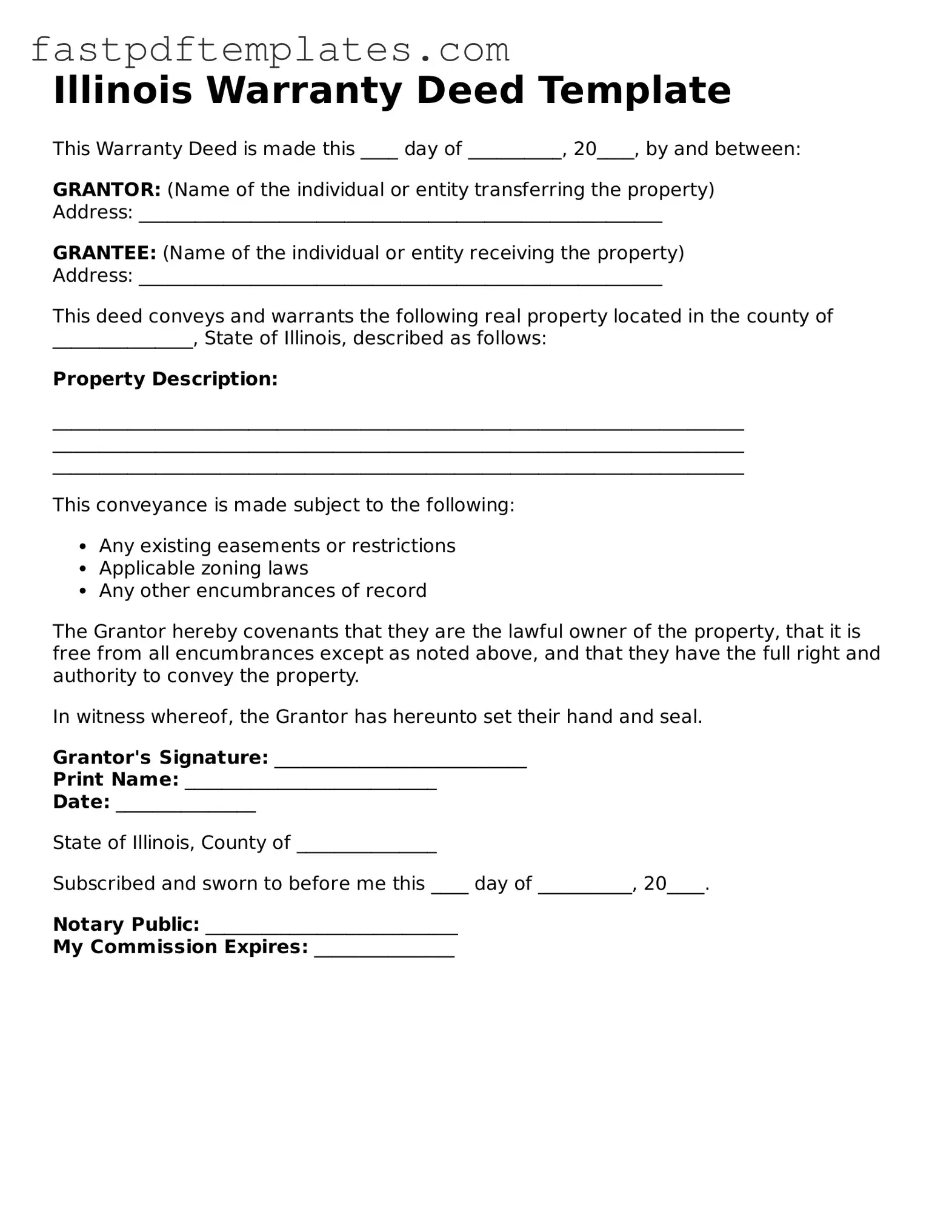Illinois Warranty Deed Template
This Warranty Deed is made this ____ day of __________, 20____, by and between:
GRANTOR: (Name of the individual or entity transferring the property)
Address: ________________________________________________________
GRANTEE: (Name of the individual or entity receiving the property)
Address: ________________________________________________________
This deed conveys and warrants the following real property located in the county of _______________, State of Illinois, described as follows:
Property Description:
__________________________________________________________________________
__________________________________________________________________________
__________________________________________________________________________
This conveyance is made subject to the following:
- Any existing easements or restrictions
- Applicable zoning laws
- Any other encumbrances of record
The Grantor hereby covenants that they are the lawful owner of the property, that it is free from all encumbrances except as noted above, and that they have the full right and authority to convey the property.
In witness whereof, the Grantor has hereunto set their hand and seal.
Grantor's Signature: ___________________________
Print Name: ___________________________
Date: _______________
State of Illinois, County of _______________
Subscribed and sworn to before me this ____ day of __________, 20____.
Notary Public: ___________________________
My Commission Expires: _______________
